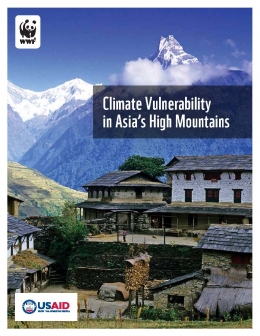Climate Vulnerability in Asia’s High Mountains
Year:
2014
Publisher:
World Wildlife Fund (WWF) & United States Agency for International Development (USAID)
Asia’s High Mountains (AHM) are at particular risk from shifting climate, as much of the region is highly dependent on seasonal rainfall and glacial runoff for water resources, and many communities lack the resources to respond to the effects of rapidly shifting climate. AHM are also vulnerable to increases in frequency and intensity of extreme weather. Management strategies are complicated by large spatial gradients in precipitation regimes throughout AHM, and management strategies based on regional estimates of climate change are unlikely to apply at smaller scales. Distinct climatological influences, such as summer monsoons and winter westerly disturbances, and substantially different topographies between mountain ranges require diverse climate adaptation strategies. For example, water management strategies that work in the monsoondriven eastern and central Himalaya should not be applied in the snow- and ice-melt-driven northwestern Himalaya and Karakoram without accounting for local variation in the hydrologic cycle.
Work regions:
Publication Type:

Files:
